It is apparent from the glamorous art, clothing, and architecture that the 1700s was a time of opulence and indulgence for the wealthy. Two of the main themes in this era were vanity and sensuality which were more openly celebrated and indulged in than previous decades. Many aristocrats believed that “the key to happiness was personal satisfaction and a healthy dose of vanity. The ambition to primp and please was ‘the soul of society and we can state that both sexes obey equally this law of nature'” (Martin). Although both men and women indulged in vanity and sensuality, it is arguable that artists focused on the women’s addiction to beautification processes while the men took pleasure watching these displays. Thus, “Rococo art made (male) voyeurism itself into a new paradigm for the viewing of art… and increasingly important subject” (Baldwin).
While the aristocrats enjoyed these indulgences, the poorer classes were not pleased with these displays of extravagances. As the Enlightenment’s philosophies flourished, it became more apparent that the aristocrats were engrossed in social self-absorption which was one of the reasons that the Enlightenment grew. With this in mind, the followers of the enlightenment were not pleased with the topics depicted in art and the moralities in question. Through the paintings of toilettes, lounging, bathing, cosmetics, and medicinal treatments, the 18th-century art boldly explores and glorifies what the wealthy did behind closed doors.
The Toilette and the Art of Lounging
A huge part of the aristocratic lifestyle in the 1700s was the toilette. “The toilette, or dressing, was a daily ceremony in which important persons were dressed (including hair styled and cosmetics applied) before a select audience… the ritual was created by Louis XIV and is associated with royalty, aristocracy and even members of the bourgeois” (Van Cleave). In many ways, the toilette “was a staged and artificial glimpse of secrecy and intimacy complete with charming props – the all-important mirror… The fabrication of femininity was the story” (Vickery).
Although women getting dressed has always been depicted in art, the Rococo Era explored the intimacy of the wealthy going through beautification processes more than other decades because the toilette was such a huge part of the French court at the time. Thus, it is no surprise that the French painter, Jean Frédéric Schall, painted these intimate scenes as it was the “lady’s toilette that appealed as a titillating subject for art” (Vickery). The subject matter in question can be seen in Schall’s Morgen Toilette (Morning Toilette) which was painted around 1796 in Paris, France (Rijks Studio). In this piece, a wealthy woman is undressing from her nightgown in front of a large mirror. The painting has an interesting style of brush strokes as they seem more imposing and obvious. Also, the colors of the painting are not overly bright but rather dull. There are many details in this piece that add to the artistic implications of the scene such as the small painting above the mirror which depicts a nude couple embracing and laying beside one another. Morgen Toilette could be viewed as somewhat invasive and self-indulgent which would go against the moralities that the enlightenment believed in.
While some art liked to focus on beautification, some of the art in the 1700s liked to idolize relaxation. Much like the opulence of the toilette, lounging was a symbol for social class and a popular sensual theme in art. Some of these displays have been said to “focus on a deliberately unreal, romanticized leisure, [which] probably reflected the changing political position and cultural pursuits of the French aristocracy in the later seventeenth century” (Baldwin).
As seen in Jean-Honor’s Fragonard’s La Gimblette, created in 1770 in Paris, France (Art.com), the painting depicts a somewhat voyeuristic scene of a young woman playing with her dog while laying on her plush bed. Like many paintings of the time, La Gimblette features a dark background, yet the bed and its occupants seem to have a beam of light which highlights them. Similar to Fragonard’s other works, the positioning of the young woman is quite provocative, yet Fragonard pairs this risqué pose with a dog which “is a symbol of fidelity” (Harris and Zucker). This combination could be an ode to the aristocratic culture which expected faithfulness yet celebrated flirtation. The fact that this painting indulges in sensuality goes against the moralities of the enlightenment beliefs.
Bathing
The French artist, Louis-Léopold Boilly, was known for “depicting the most varied aspects of everyday life in Paris” (Bhutia). In his La Toilette intime ou la Rose effeuillée, which translates to “Personal hygiene where the rose bloomed” (Belfield), Boilly depicts a young woman using her bidet. La Toilette intime ou la Rose effeuillée was created in 1761 most likely in Paris, France (Belfield). The young woman appears to be in a private storage space as there is a feather duster, clothing, large jars, and other supplies scattered around the room.
The painting uses rich dark colors in the background which helps the contrast with the light-colored clothing on the maiden. The lines used in this picture are very soft and decadent. An important symbol in the painting is the fully bloomed pink rose with its petals scattered on the ground. With this said “the flower was often used as a symbol for menstruation” which could be suggesting that she was on her period. In the 1700s, menstruation was not talked about publicly but was rather kept as private as possible. With this said, “menstrual blood carried connotations that were both repellent and erotic” (Belfield).
The subject matter of this painting is quite bold for the time considering that bathing and menstruation was still considered somewhat of a private ordeal. Although humans taking baths or cleaning themselves had been painted before, this painting differs from the others as the young woman is not a goddess or Biblical character, yet instead, she is a wealthy aristocratic woman. It can be assumed that she is wealthy because the poor did not have nearly as many opportunities to wash themselves. With this in mind, the subject matter of the painting could be viewed as boastful, voyeuristic, and evocative because it explores a private scene.
Cosmetics
In the early 17th century, both men and women in England and France wore obvious cosmetics. “Gender differences were less important than class differences – cosmetics marked one as aristocratic and à la mode [fashionable]… Makeup was not intended to look natural — but instead, ‘to represent one’s aristocratic identity as decoratively as possible through cosmetic artifice.’ Women and men showed their respectability and class through white skin, and heavy makeup was considered more respectable than naturally light skin” (Van Cleave). As can be seen in François Boucher’s painting Marquise de Pompadour at the Toilet-Table “Marquise de Pompadour (mistress of King Louis XV),” (Francois Boucher: The Complete Works) is not lacking in social status for her makeup is quite decadent.
The French painter, François Boucher, is deemed as the “most celebrated decorative artist of the 18th century.”. In Marquise de Pompadour at the Toilet-Table (which was painted in 1758 in Paris, France) Boucher’s painting shows Marquise de Pompadour who is applying makeup at her toilette (Francois Boucher: The Complete Works). The painting is lovely and sweet with its creamy and pink colors. Boucher uses soft and rounded lines in this painting which adds to the softness. The details in the painting are exquisite! For example, in the detailed image below, one can see that the lady holds a small makeup brush with bright pink powered tinting the tip. In the other hand she holds a golden box in which the rouge is kept.
Besides the beauty of the painting, the painting clearly shows that makeup was a major factor in aristocratic society. For the most part, the poor could not afford food let alone cosmetics, and as makeup signified social class the poor were once again unable to keep up with the ever-decadent aristocrats. Thus, Boucher’s painting celebrates the moment in time in which this lady is indulging in vanity and boasting about her social class. In this painting, Boucher is also alluding to lustful connotation as “the ritual of beautification was a complex and public display of feminine attractions to a group of fawning men.” Because beautification had connections to social standing and intimate insinuations, there were many “moral and aesthetic arguments against cosmetics… [The enlightenment believed that] cosmetics were vile masks that could hide a corrupt physiognomy, incapable of reproducing the true beauty of the pure soul” (Martin).
Medicinal Treatments
The French artists, Alexandre Chaponnier, is known for his engravings which are often inspired by other artist’s artwork. The Interiör med två kvinnor och en man which is also referred to as The Officious Waiting Woman was inspired by Jean-Frederic Schall’s painting la Soubrette Officieuse. This piece was created in 1786 most likely in Paris, France (Artnet). Chaponnier’s artwork looks more like a painting than a color etching which adds to the intricacy and fluidity in the artwork. The painting depicts a wealthy lady receiving an enema from her maid, yet as the maid’s face suggests, they are suddenly interrupted by the gentleman opening the door. The colors in the etching are quite dark especially in the background, yet the woman on the bed seems almost to be glowing as the light cascades over her, the white sheets, and the pile of pillows. With this spotlighting, the eye is drawn to the women on the white bed.
Much like Boilly’s La Toilette intime ou la Rose effeuillée, Chaonnier makes a shocking statement with his etching because it depicts a relatively private daily ritual. Yes, that is correct a daily ritual. Enemas were “considered a necessity, [a] daily cosmetic treatment… Every day the ladies of the mansion submitted themselves to the enemas from the water, which contained various herbs and perfumes” (Duda). As this medical treatment was considered to be a cosmetic necessity this painting depicts how indulgent the aristocrats could be when involving physical appearance. Although this painting does not appear to be sensual, “an important erotic sub-genre of the period, [was] that of the woman awaiting an enema. In this sub-genre[,] the nude rests on a bed, and a maid or doctor waits to deliver an enema, the tell-tale clyster or syringe in their hand” (Pain). Enemas were a popular subject matter in art, yet this depiction of a beauty ritual can be viewed as complete frivolity and human fascination.
Conclusion
Art from the 1700s is a wonderful way to understand and explore what the aristocratic society was obsessed with, and it also offers a lot of information on what the poorer classes and followers of the enlightenment deemed immoral. With the viewpoint of the middle “Rococo attachment of seriousness to the aesthetic and the decorative tended to undermine that seriousness, especially when Rococo art spurned tragic and ‘serious’ subjects for charming, sentimental, private dramas handled with a deliberate playfulness, charm, lightness, sensuality, and ‘escapism'” (Baldwin).
Overall, the French aristocrats went against moralities of the time because they indulged their vanities and sensual desires through paintings. I really enjoyed learning more about the Rococo art and its relations with morality. Although some of my favorite paintings are from the Rococo Era, I do not see myself displaying any of these paintings in my home, yet I do admire their style and find their content interesting!
Work Cited
Baldwin, Robert. “AN INTRODUCTION TO ROCOCO ART, 1717-1775.” Social History of Art. Social History of Art, n.d. 20 Oct. 2017. Print.
Belfield, Jasmine. “‘An Indisposition Ordinary to Her Sex’ – Menstruation in the Eighteenth Century.” Eighteenth Century Lit. PBWorks. n.d. Web. 18 Oct. 2017. http://eighteenthcenturylit.pbworks.com/w/page/112843207/Menstruation
Bhutia, Thinley Kalsang. “Louis-Léopold Boilly: French painter.” Encyclopaedia Britannica. Britannica. 29 Mar. 2016. Web. 20 Oct. 2017. https://www.britannica.com/biography/Louis-Leopold-Boilly
Chaponnier, Alexandre. “Interiör med två kvinnor och en man.” Artnet. Artnet. n.d. Web. 17 Oct. 2017. http://www.artnet.com/artists/alexandre-chaponniere/past-auction-results
Duda, Sebastian. “Tysiąclecia z lewatywą.” Wyborcza.pl: Ale Historia. Wyborcza.pl, 1 Dec. 2014. Web. 15 Oct. 2017. http://wyborcza.pl/alehistoria/1,121681,17042668,Tysiaclecia_z_lewatywa.html
François Boucher: The Complete Works. François Boucher: The Complete Works, n.d. Web. 16 Oct. 2017. https://www.francoisboucher.org/the-complete-works.html?pageno=2
Harris, Beth and Steven Zucker. “Fragonard, The Swing.” Khan Academy. Khan Academy. n.d. Web. 20 Oct. 2017. https://www.khanacademy.org/humanities/monarchy-enlightenment/rococo/v/fragonard-the-swing-1767
“La Gimblette.” Art.com. Art.com. n.d. Web. 20 Oct. 2017. http://www.art.com/products/p12066964-sa-i1502372/jean-honore-fragonard-la-gimblette-girl-with-a-dog-circa-1770.htm
Martin, Morag. “Doctoring Beauty: The Medical Control of Women’s Toilettes in France, 1750–1820.” US National Library of Medicine: National Institutes of Health. National Center for Biotechnology Information, 1 Jul. 2005. Web. 20 Oct. 2017. https://www.ncbi.nlm.nih.gov/pmc/articles/PMC1172293/
“Morning Toilet.” Rijks Studio. Rijks Studio, n.d. Web. 18 Oct. 2017. https://www.rijksmuseum.nl/en/search/objects?p=1&ps=12&involvedMaker=Jean+Fr%c3%a9d%c3%a9ric+Schall&st=OBJECTS&ii=1#/SK-A-3260,1
Pain, Stephen. “French Rococo: Watteau, Boucher and Fragonard.” Escape Into Life. Escape Into Life, n.d. Web. 19 Oct. 2017. https://www.francoisboucher.org/biography.html
Van Cleave, Kendra. “Women’s Hairstyles & Cosmetics of the 18th Century: France & England, 1750-1790.” Démodé: Historical costume projects & research resources, specializing in the 18th century. Démodé Couture, n.d. Web. 17 Oct. 2017 http://demodecouture.com/hairstyles-cosmetics-18th-century/
Vickery, Amanda. “18th-century Paris: the capital of luxury.” The Guardian. The Guardian. 29 Jul. 2011. Web. 17 Oct. 2017. https://amp.theguardian.com/artanddesign/2011/jul/29/paris-life-luxury-getty-museum

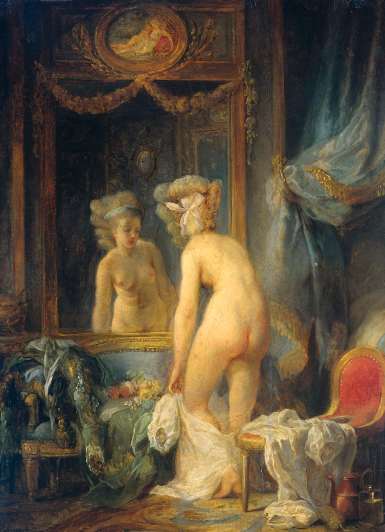
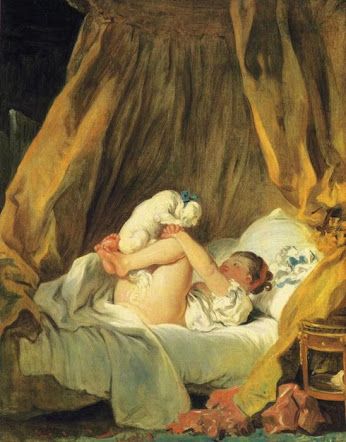
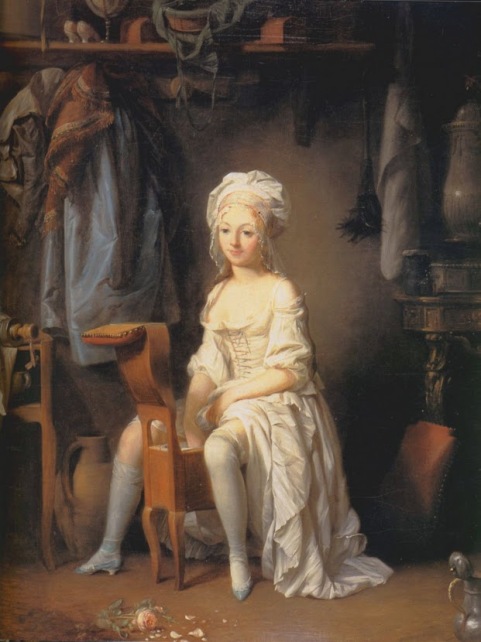

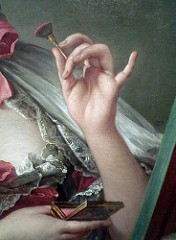
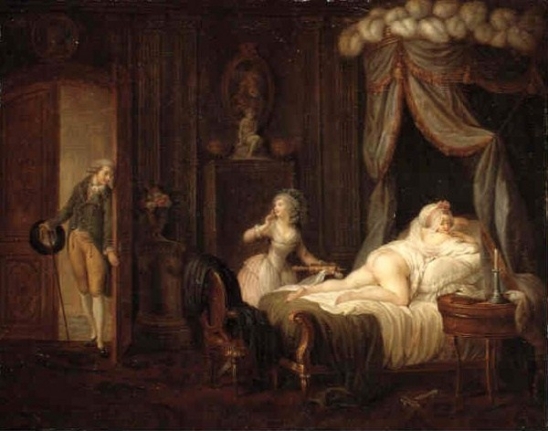
Your blog gave me a new understanding of the rococo art of this era. I knew that extravagance was a dominant part of this era, but I had not thought about how that extravagance would bleed into the art in such a direct way. The art is depicting these uppercase women in a way that was very normal to them, whereas I had thought of them as slightly ridiculous in their primping and staged feel. I think part of this is because their gratuitous decadence and extravagance brings out very negative feelings for me when I look at the pieces. The upside is that the pieces are snapshots into the time that we may not have been able to fully imagine because it is so far in the past and different from the current culture.
LikeLike
Your gallery was quite beautiful. It truly displayed the lavish life style of the 1700s. I found it quite interesting how white often highlighted the sexual innuendos. A few of these paintings could have easily been considered the soft porn of the era, many of the positions are suggestive and often have another meaning. I agree with you though the paintings are beautiful I wouldn’t want to own one. You did an amazing job with the information and the clarity of understanding with each piece.
LikeLike
Ooooh. Nice choices. I appreciate the turn of the arts during this time. I suppose the beauty of the female form has always been admired by the artist, but to unrelentingly accept and display the sensual value of such is some what new territory. It would have been funny to be a fly on the wall when these pieces were displayed for the first time. I’m sure there was plenty of resistance by the old timers, same as now I suppose.
Here’s a neat article about the depiction of women during the classical era.
http://cornerstone.lib.mnsu.edu/cgi/viewcontent.cgi?article=1009&context=jur
LikeLike